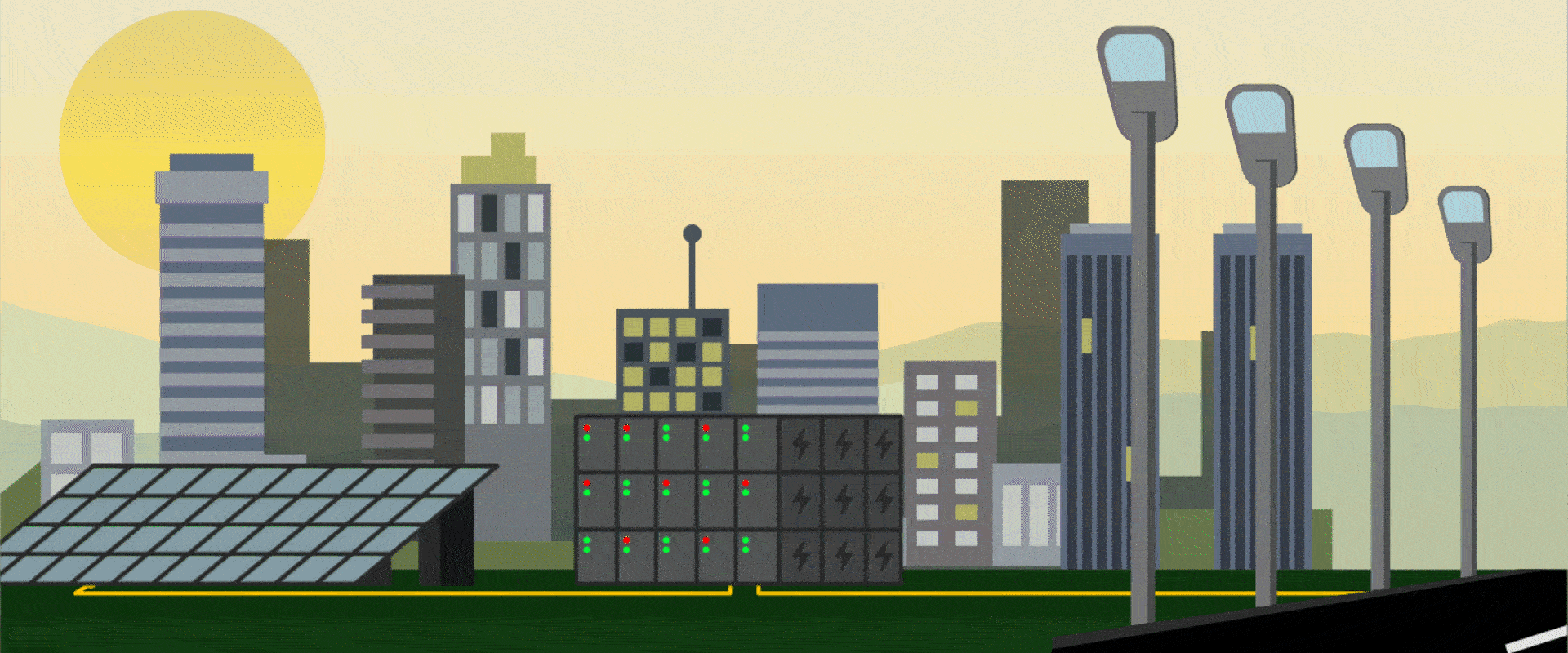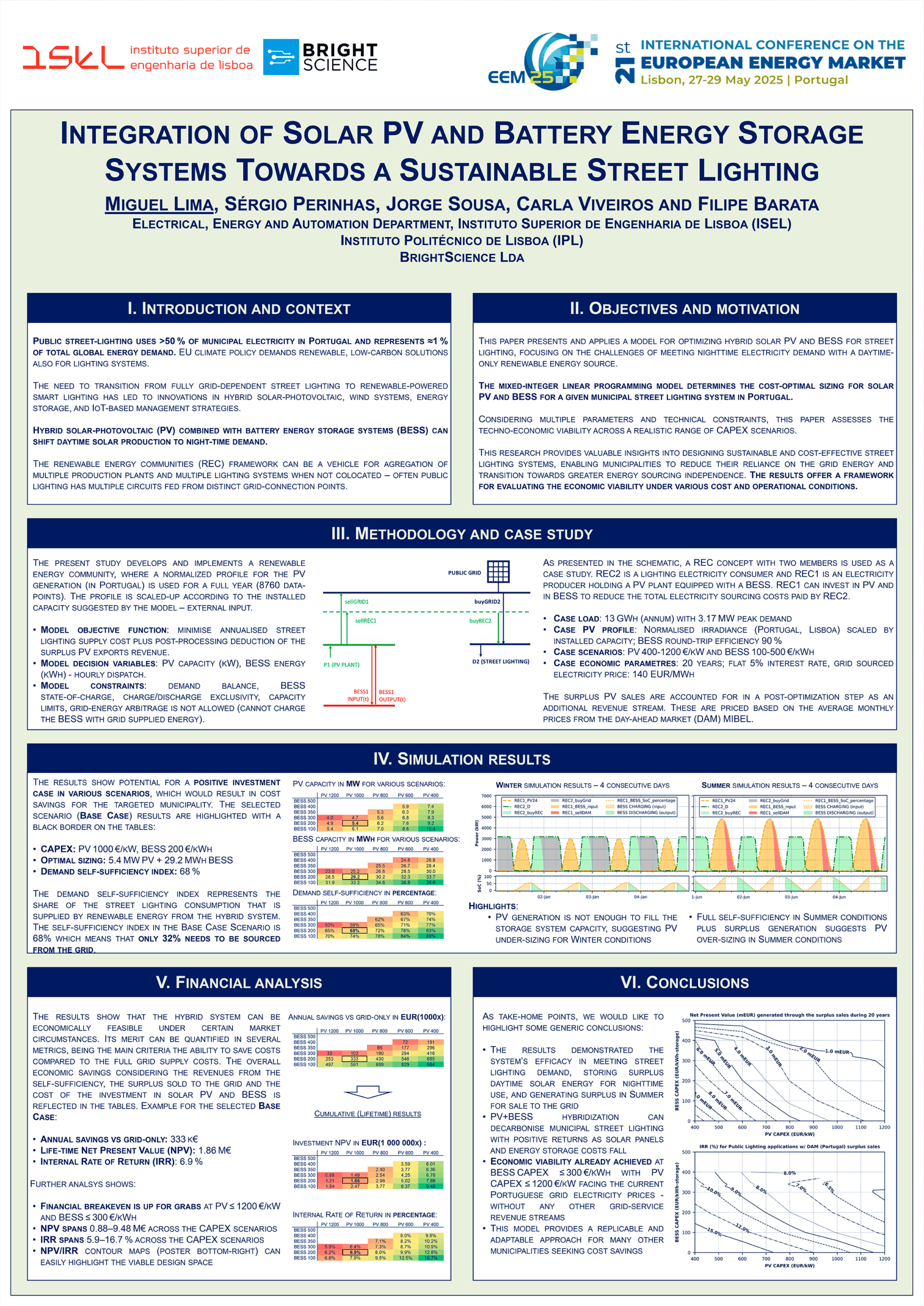
How to achieve carbon neutrality in street lighting
A recent study by ISEL and Bright Science demonstrates the technical and economic viability of hybrid solar photovoltaic systems with battery energy storage for sustainable public lighting.
The European Green Deal set targets to reduce greenhouse gas (GHG) emissions by 55% by 2030, compared to 1990 levels, and to achieve climate neutrality by 2050. To achieve these goals, the Portuguese Low Carbon Roadmap outlines the “options for transitioning to a competitive low-carbon economy by 2050,” imposing transformations in various sectors of the economy to reduce energy consumption and minimize climate impact.
This environmental goal has led several public and private entities to seek sustainable options for energy production, such as the installation of small photovoltaic power plants for self-consumption.
Decentralized energy production for self-consumption
Photovoltaic self-consumption enables the production of clean energy at the point of consumption using solar panels. It reduces costs, promotes energy independence and contributes to sustainability.
The principle is simple. Solar panels produce clean, free electrical energy during the day (when the sun is shining) and the electrical grid supplies the remaining energy, especially at night when the panels do not produce. Every kilowatt-hour of electricity generated by a photovoltaic power plant reduces the need for energy from non-renewable sources, decreasing dependence on fossil fuels and directly contributing to reducing GHG emissions and decarbonizing the economy, with lower production costs.
Hybrid supply systems for street lighting
More than half of municipal electricity consumption is used to power the street lighting network, reaching as much as 70% in some cases. However, given that public lighting consumption occurs precisely at night, when there is no sun to power photovoltaic panels, we are faced with a limitation on the use of photovoltaic solutions to reduce municipal electricity consumption. Or perhaps not.
From a technological standpoint, it is possible to solve the problem by adding one more piece to the puzzle: a Battery Energy Storage System, or BESS. This system functions as an “energy bank,” allowing the energy captured by photovoltaic panels during the day to be stored for use at night. This solution paves the way for municipalities to become (virtually) independent from the power grid.
And the legal framework is favorable to its implementation. With the amendments introduced in DL50/2021, it is now possible to combine energy efficiency projects with renewable energy production, making it very timely to add these hybrid supply systems when he transitioning to LED street lighting to drastically reduce carbon emissions and energy production costs.
How cost-effective is the solution?
Let us focus on one of the most important aspects of a project of this nature: are hybrid systems combining photovoltaic panels and battery energy storage systems economically viable for public lighting? To answer this question, a study [1] was carried out in which I participated with a team of researchers from ISEL‘s Department of Electricity, Energy, and Automation. This study, published at the end of May 2025 at the European Energy Markets (EEM25) conference, analyzed precisely the economic profitability of a hybrid solution (photovoltaic + BESS) for public lighting in a municipality.

The results of the study showed the economic viability of hybrid systems based on equipment prices and solar exposure. Profitability is achieved with solar panel installation costs of up to €1,200/kW and batteries costing up to €300/kWh. In a baseline scenario with 5.4 MW of photovoltaic power and 29.2 MWh of storage, 68% energy self-sufficiency and annual savings of €333,000 were achieved compared to exclusive grid supply. In the summer, the system achieves energy self-sufficiency, with a surplus of production that can be sold to the grid; in winter, it is necessary to partially resort to the electricity grid, as a 100% self-sufficient solution is not economically viable.
While, on the one hand, the prices of photovoltaic solar panels have fallen significantly in recent years, when it comes to BESS we are still in the early stages, so profitability conditions continue to depend largely on the price of batteries, especially for larger projects. On the other hand, battery prices in 2024 have fallen much more than analysts had initially predicted, which is a clear sign that, in the short term, the profitability of these investments will be even greater.
Therefore, it can be concluded that, with the technology already available and current regulations, we are very close to achieving carbon-neutral street lighting in our municipalities.
[1] “Integration of Solar PV and Battery Energy Storage Systems Towards a Sustainable Street Lighting” de M. Lima, S. Perinhas, J. Sousa, C. Viveiros e F. Barata
Miguel Allen Lima
ARQUILED CEO





